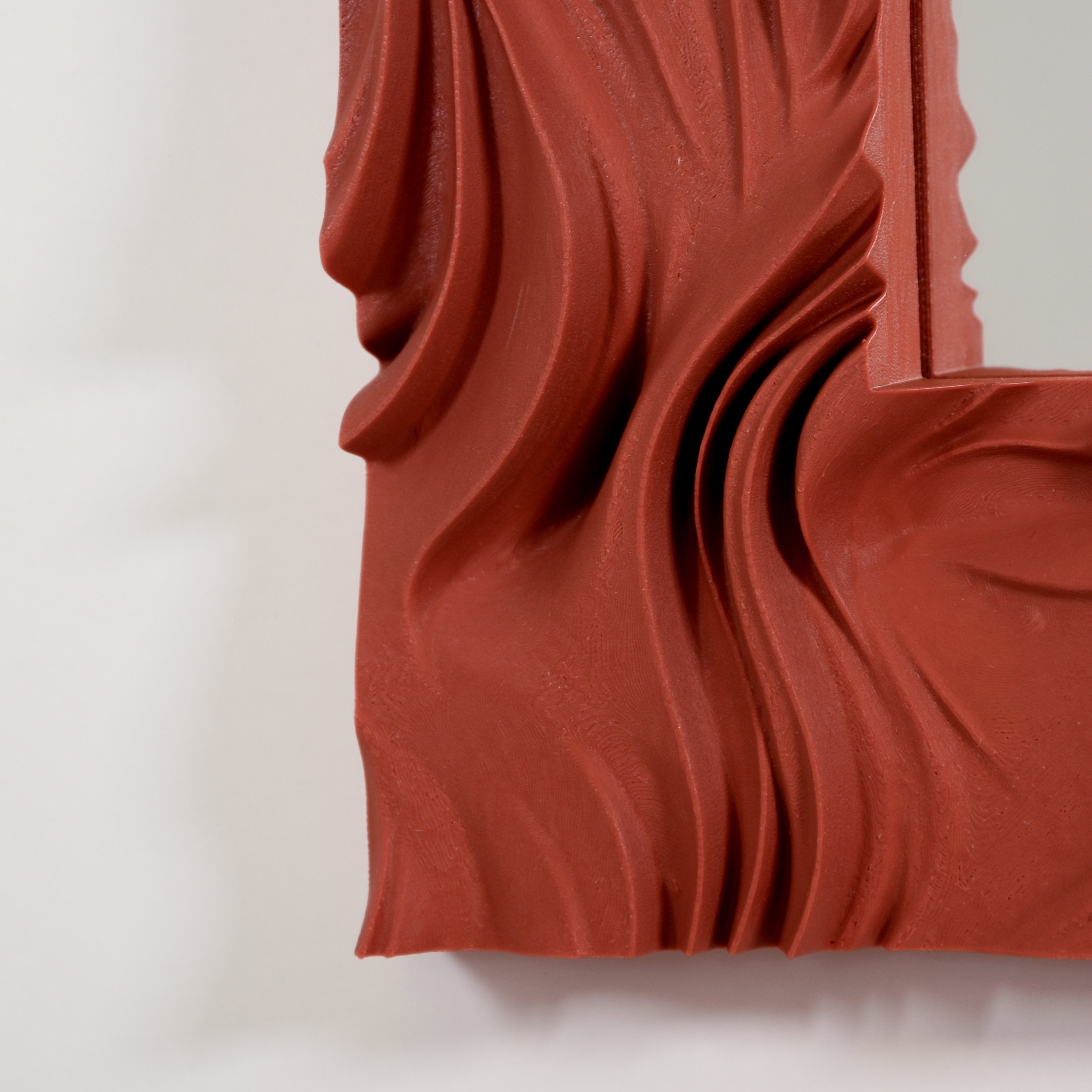Exploring the impact of generative AI on creativity, Generative Artificial You (AY) assesses AI’s strengths and weaknesses in the creative process. How does the technology couple with distinct human qualities like appreciation of beauty and understanding of multi layered context.
The process began by iterating hundreds of images using an AI image generator. After several cycles, curiosity prompted the exploration further. To find a way to bridge the gap between AI generated content and material physicality. This link became attainable by leveraging algorithmic design and 3D printing. The frames are made from recycled food packaging waste.
Although AI may appear separate from us, we must not forget that it is trained on human-made data. Consequently becoming a sort of virtual reflection of ourselves. The viewer is invited to reflect on this point while looking at one's own reflection framed in AI’s abstract representation of this human-made data.




The iterative process.
During the iterative process, it became evident that AI excels in rapidly generating imagery. However, it tends to produce results with a degree of unpredictability, often leading to chaotic and random outcomes. Rather than attempting to force my vision onto each iteration, I gradually transitioned into a more cooperative partnership with the tool. I adopted a more lenient approach, allowing the AI greater creative freedom, which frequently yielded surprising outcomes. My role shifted towards that of a guide, gently shaping the AI's direction, akin to a sailor harnessing the winds at sea rather than a driver controlling precise turns.
Intervals of the iterative process.
Value perception.
The generation of extensive amounts of content does not inherently grant it value, rather, value is conferred by human perspective. It is the human perspective that comprehends the intrinsic worth of objects and concepts in our society. Humans possess a nuanced understanding of context that encompasses cultural, political, industrial, material, and personal dimensions. These, along with many other factors are instrumental in shaping the outcome of the creative process, as well as how it is perceived by others. A single AI application is far from possessing the same level of comprehension and fluidity as a person. This is where human beings outshine these models.
Highlights of the creative process are represented here as a mind map. From the initial inspiration to the final work shared.
Final words.
Collaborating with AI as a brainstorming partner during the iterative process proved highly engaging, primarily due to the unexpected and intriguing outcomes it generated. AI is undeniably a powerful tool, though it operates within distinct limitations as is the case with specialised tools. The prevailing trajectory indicates ongoing improvements and increased sophistication in these models that will enable them to carry out a broader range of tasks. However, currently a human guide is needed to instruct these technologies where to go and what to do. It remains a reality that solely a human possesses the ability to navigate through the whole creative process, create a piece of art and appreciate its value.
Special thanks to,
Jamie and Toby, for their support and insights.


